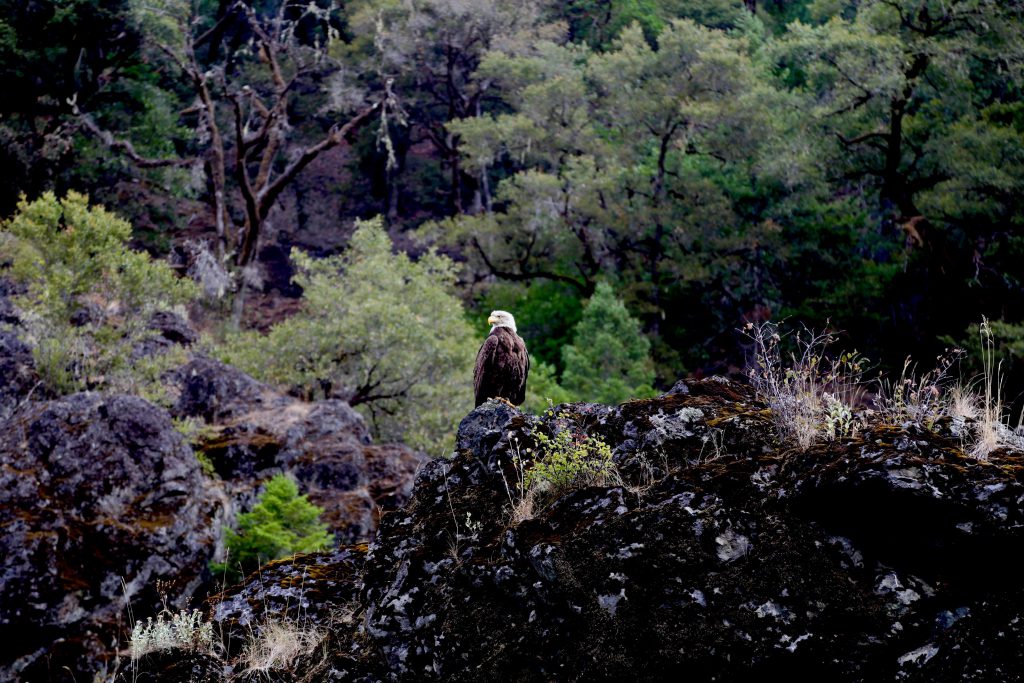This week, Oregon Senators Ron Wyden and Jeff Merkley introduced the Oregon Wildlands Act that would protect more than 200,000 acres throughout Oregon, primarily along the coast and in the southwest corner of the state.
The Oregon Wildlands Act
Named the Oregon Wildlands Act, it would include adding more than 56,000 acres to the Wild Rogue Wilderness. Currently, this wilderness area comprises the 38,400 acres surrounding the wild stretch of the Rogue River. The Wild Rogue Wilderness was established in 1978 to protect the watershed.

Currently, the land surrounding the first 20 miles of the Wild Rogue are only protected as a National Wild and Scenic River, meaning only the quarter mile on each side of the river has protection. This bill would protect the last big piece of the puzzle, protecting the land around the Wild Rogue for future generations, and for the health of the river and its wildlife.
Wild and Scenic Designations
This bill would also expand the Wild and Scenic designation to include 125 miles of tributary streams flowing into the Rogue River. The Wild and Scenic Rivers Act was signed into law in 1968 by President Lyndon B. Johnson after Senator Frank Church proposed the bill. At the time, they classified eight different rivers as Wild and Scenic, with the Rogue River being one of the original eight.
This designation protects the river from becoming dammed, developed for gas and minerals, and otherwise impeded. Today, there are 203 rivers with Wild and Scenic status.
Additionally, the Oregon Wildlands Act would create the 95,000 acre Rogue Canyon National Recreation Area. This will help bring more tourism into the state of Oregon and will bring over-all improvements to campgrounds and infrastructure.

Natural Resources Along the Rogue River
Prior to its protection in 1968, the Rogue River Valley was exploited for its natural resources. The first settlers arrived in the 1850s with hopes of finding gold. These European settlers moved into the valley, establishing small farms along the river, beaver trapping, and hunting. They tried to drive out the Native American tribes living there, referred to by French settlers as “coquins” or “rogues,” for which the river is now named. Approximately 2,000 Native Americans were exiled to reservations following the bloody Rogue River War of 1855-56.

In the late 1800s, large-scale commercial fishing depleted the native Chinook and Coho Salmon. The fish were canned and shipped across the United States, and even to Europe. Hatcheries were created, but the fish populations continued to decline. Dams were built for electricity, affecting the health of the entire river’s ecosystem, including the salmon who were blocked from swimming upstream.
Whitewater Paddling on the Rogue River
Whitewater recreation began on the Rogue around 1915, when Glen Wooldridge first traveled from Grants Pass to Gold Beach on the Pacific in a boat that he built. In 1917, he began guiding float trips. Among his clients were Clark Gable, writer Zane Grey, and Herbert Hoover. Wooldridge was also known for the way he used explosives to blast away much of the rock in the narrower rapids, allowing him to run the river back upstream.

Today, most of the dams have been removed, and the Rogue now runs freely for 157 miles, from the dam at Lost Creek Lake to the Pacific Ocean, allowing salmon to travel upstream and spawn. We are grateful for the protections placed on this beautiful river, leaving us to enjoy it in its more natural state. Please let your Senators and Congressmen know if you would like to support this bill!

